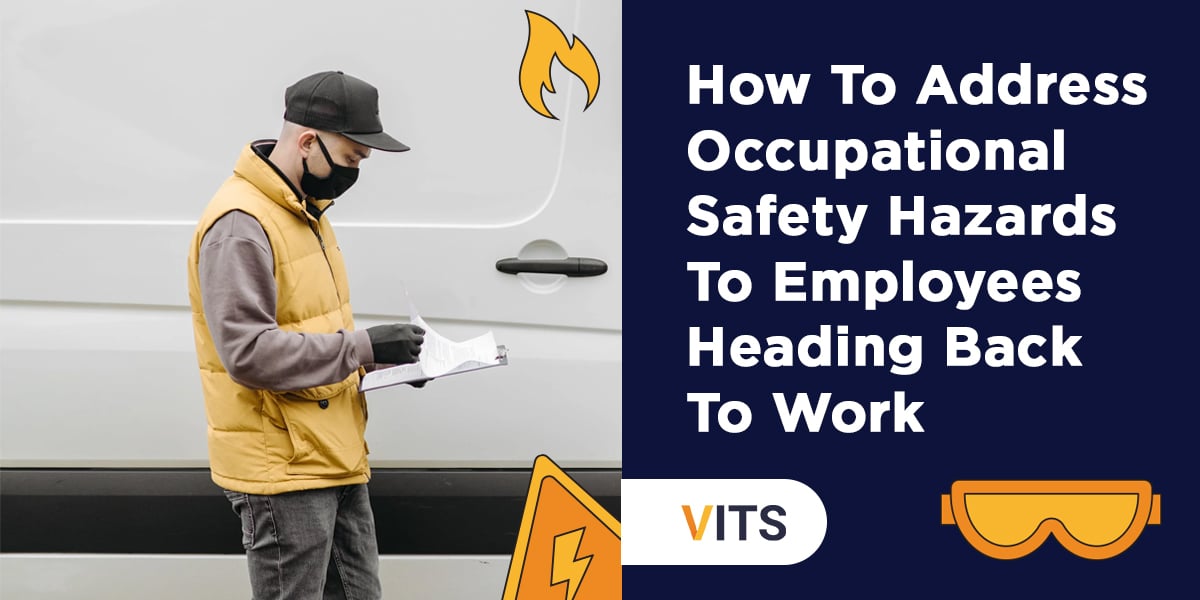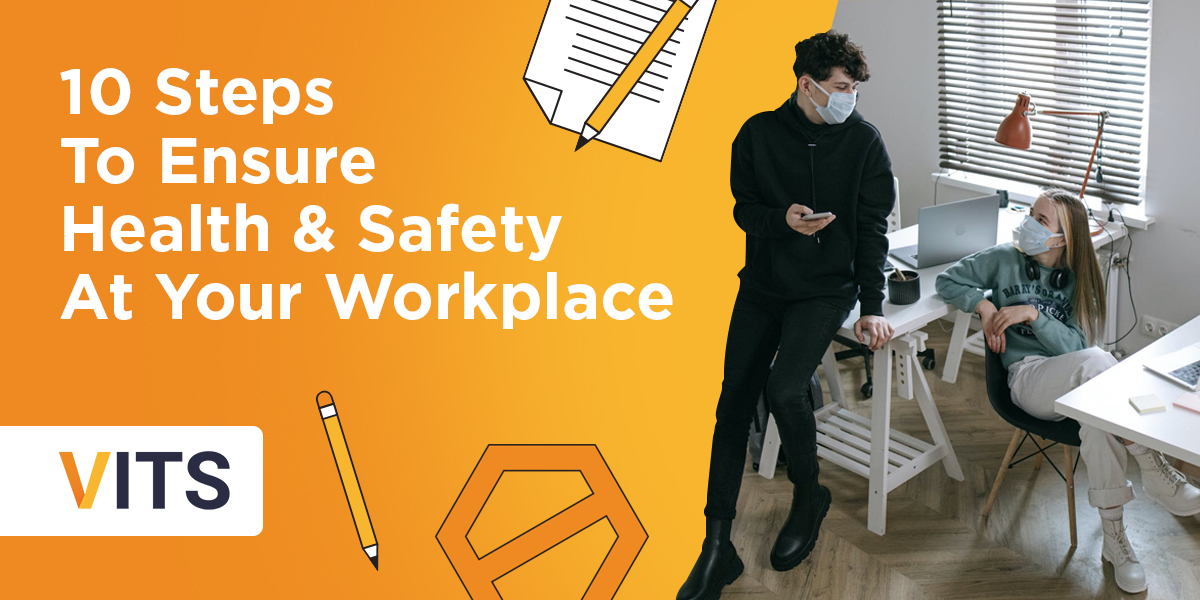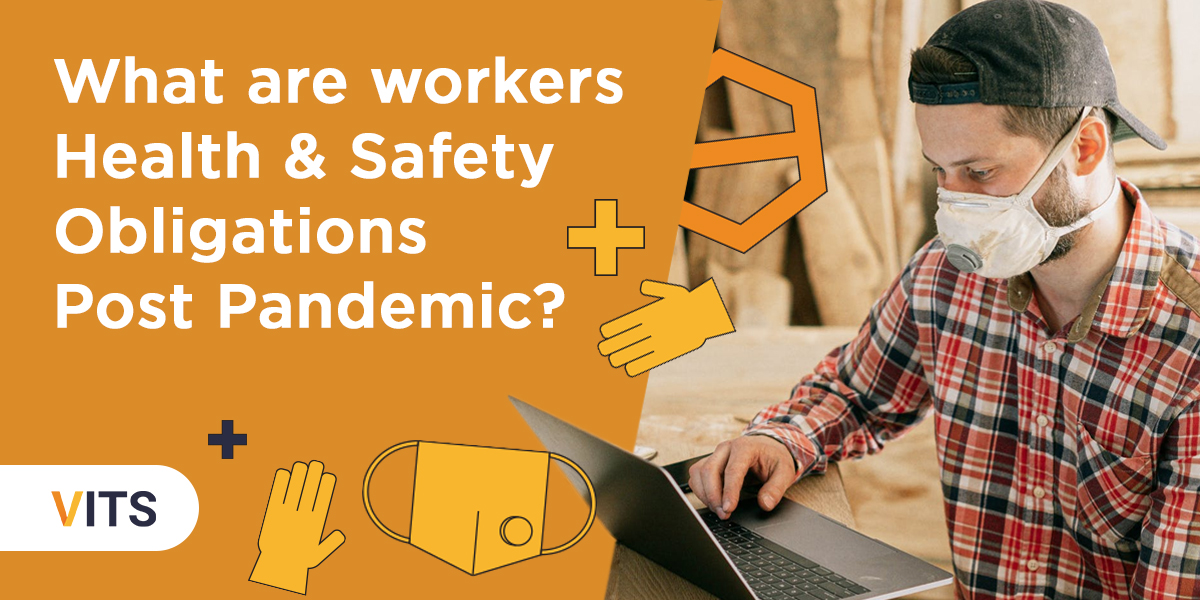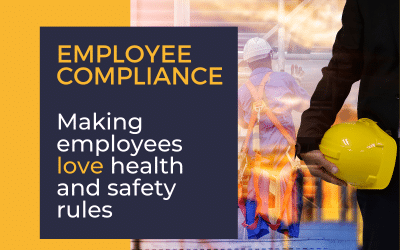How to Address Occupational Safety Hazards for Employees Heading Back to Work
Workplace health and safety is a team sport. As such, a total system approach is needed, embracing consultation and cooperation between employers and workers, and the broader community. This is the only way we can tackle the big challenges such as work-related injury and illness, hazardous industries and pathways to better health and safety for all workers.
The pandemic has driven a major shift in the nature and extent of work. While cleanup and recovery efforts around the world have resulted in significant declines in the volume and severity of the disease, it is still spreading in some regions. Continued screening and monitoring will be needed for some time to help local control efforts conclude successfully.
In other areas, outbreaks are under control, but many workers have followed official advice to remain at home for self-protection. In certain places, schools have been closed to protect children from infection. In still other countries, the effects of disruptions caused by COVID-19 have been compounded by economic instability or other factors that threaten to turn a crisis into a catastrophe.
Safe and healthy working conditions are fundamental for decent work and are the foundation upon which policy guidance for the return to work must be based. This guidance should include the following aspects: general principles; definition of hazards; identification of safe and hazardous tasks; settings with specific hazards; health surveillance, injury prevention strategies, including contingency plans, risk assessment, incident investigation, training on safety and health protection.
The guidance should be developed through a participatory process involving both employers' organizations and workers' organizations at a national level.
Two Important Aspects to Consider:
- Develop a Policy
This policy should allow guidance for a return to work that can be done in phases and in a safe way.
- Guidelines
Develop and put guidelines in place for risk assessments in the workplace. This can also include guidelines for implementation that includes measures for both prevention and protection
So, if you want to ensure a safe return to work for your employees, let’s take a look at how we can formulate policy guidelines that are effective for a safe return to work.
Safe Return to Work: General Guidelines
Whether your employees are returning to work post-COVID or post-maternity leave, these policy guidelines should help to ensure a safe return to work.
Important Aspects to Keep in Mind:
- Employers in all business sectors, government and local authorities and individuals need to know how to implement protective and preventive measures to ensure, so far as is reasonably practicable, that risks to health and safety at work do not arise. Implementing these measures may require significant changes to workplace processes and practices within an organization.
- When employees are returning to work it can help to gradually transition staff members instead of jumping in and becoming overloaded with safety-related training and activity. It can help to make logistics and process flows simpler during the period that employees are returning to the workplace. If employees are overloaded with too much, they can become quickly overwhelmed- which will impact negatively on the overall safety awareness in the workplace.
Use the following tips to create an environment that promotes a safer workplace, for employees heading back to work.
-
Who Should Return to Work First?
Do all employees really need to return to work at the same time? Chances are, they don’t. And it's generally the case that not all employees will be able to return to work at the same time anyway- especially in countries where there are still strict COVID-19 measures in place.
After making this decision for employees to return to work, the organization should document the process to ensure that employees return to work fairly and equitably. The plan should contain a timeline for reentry and identify the roles and responsibilities of the participants.
Business needs will typically determine the rate at which employees will return to work first, and ongoing restrictions should be considered too. Health precautions such as physical distancing and compliance with regulations may also dictate how many employees are able to return to work at one time.
It can be helpful to implement flexible schedules to allow for staggered working hours. And if a worker can still work remotely without it having a negative impact on business operations then he or she should continue to work remotely.
Top Tip:
Ensure reasons for staggered schedules and hours are documents to avoid accusations of discriminatory criteria.
-
Update Risk Assessments
In light of the pandemic, risk assessments and health assessments have to be updated. This helps to curb any infections or risks in the workplace. By identifying the risks and possible infections early enough, a proactive approach can be adopted and the situation can be mitigated with the necessary control measures.
-
Preparation is Key
When workers are returning to the workplace, whether from maternity leave or after a period of remote work induced by the pandemic, specific preparations need to be made.
Some Key Examples of Preparation for This Are:
- Examine the layout of the workplace. Do any changes need to be made to account for social distancing?
- Does the work schedule accommodate systematic and deep cleaning?
- Are there disinfection protocols in place and is there sanitiser accessible for all workers?
- Have all the workbenches, work areas, equipment and tools been sanitized?
- Is there enough PPE equipment such as gloves or masks?
-
Ensure Open Communication
Workers, employers, and even trade unions should have an open dialogue. This encourages staff members to play an active role in the workplace’s health and safety-- and promotes a robust safety culture in the workplace.
Ensure all relevant representatives and committees are involved when they need to be: this means they need to be present in the planning, discussion and monitoring of workplace health and safety measures. Remember to encourage representatives not to treat health and safety as something that needs to be policed. Instead, it is quite literally for the safety and wellbeing of everyone in the workplace- it can alter the course of a worker’s life and change the trajectory of his or her future if safety is not valued.
Employees should also be involved in discussions about safety-- encourage them to make suggestions and involve them in the assessment of risks. But more than just pointing out risks and hazards, encourage them to consider what solutions need to be put into place. This stimulates a safety mindset, if you can get workers to start thinking about safety solutions on a daily basis, this way of thinking will seep into their everyday tasks and you will likely see a decrease in overall incident reports. Why? Because your workers have become safety-minded.
-
Ask the Experts
Don’t be afraid to ask for help, especially when it comes to formulating a return to work plan. This may be in the form of an external occupational health and safety service or officer. It could also be in the form of an investment in health and safety software. Health and safety software like the VITS platform can be instrumental in your “return to work” plan- but it can also be highly valuable in maintaining a safe work environment long after the COVID pandemic has simmered down.
The workplace has changed since the pandemic- that much is undeniable. And if you thought there was a sea of paperwork and bureaucracy to swim through before the pandemic, just imagine what your health and safety bureaucracy will look like after employees return to work and there are still COVID measures in place. It will be nightmarish, to say the least. But aside from the painstaking time and effort, this can also detract from your ability to do your job, because guaranteed you aren't paid to be pushing papers and chasing signatures for health and safety.
A software like VITS can automate many of these painstaking processes, giving you more time to be on the ground making the workplace a safer and more productive place for everyone.
-
Keep Track of Regulations
In a situation where there is a constantly evolving global epidemiological situation, your organization must have at least one person dedicated to keeping abreast of the latest recommendations and regulations from health authorities. Things can (and have) change from one day to the next, and these changes will have to be implemented almost immediately- so it is helpful if there is one person tasked with the responsibility of keeping up to date with the latest developments in terms of policies and procedures.
-
Train Employees
It is important to train employees returning to work as if they are starting at the very beginning- i.e, treat them as a white paper when it comes to health and safety. Many workers have been away from the workplace working remotely for quite some time, so it is essential that training takes nothing for granted in terms of existing safety knowledge. However, treating employees with respect and welcoming them back warmly is just as important-- they will be more inclined to receive the safety training and retain more of the information.
Include frequent talks about COVID-19 safety and symptoms. Encourage employees to always bear in mind how they can protect themselves. But, most importantly, encourage employees to believe in the logic behind the safety measures. When staff members understand the ‘why’ behind restrictions and policies they will be more likely to implement them in the workplace.
-
Maintain a Track Record
It can also help to keep a register of employees that have attended safety meetings or briefings, and what those sessions covered. This is an essential part of a strong health and safety program- so it should already be a part of your health and safety program. It is not always easy to manage these registers manually which is why a safety platform and software such as VITS can come in handy.
Some More “Quick Tips” for a Safe Return to Work:
- Are all staff members briefed on the “return to work” policies, procedures or plan?
- Do staff and customers know who to contact in the event of a COVID-19 query or question?
- Are there measures in place to account for mental and emotional support?
- Do managers know they need to treat the safety situation with care and emphasise the importance of the situation? Over time, a situation can easily lose its risk factor in the minds of employees. For this reason, it is important to maintain a strong emphasis on safety measures and frequently remind workers why they need to be so safety-minded.
Why is it important to carry out a Risk Assessment and prepare a Safety Statement?
Defining risk assessments and a company safety statement is essential for reducing the likelihood of workplace incidents.
A risk assessment and safety statement should be kept up-to-date and relevant to current situations, such as a global pandemic.
One of the most important techniques in reducing accidents and ill-health in the workplace is to identify, define and assess risk. Risk means that there is a chance that injury or ill health may occur. Although some risks will always exist, identifying, assessing and controlling this risk will reduce the chances of it materialising into a real problem.
The employer must provide a copy of the Risk Assessment and Safety Statement for all staff or those that may use the workplace. The Risk Assessment must be kept up to date as new hazards are identified. In addition, it is good practice to review practices as a whole as working practices change.
The Safety Statement should be regularly inspected to ensure that anything written in it is still relevant and that the measures described are regularly followed.
Another key element of a safe workplace is the enforcement of safe behaviour on the part of people working in high-risk activities; their task must be to discover any new sources of risk that endanger health or safety and remove them before they cause harm. None of this will be possible if managers fail to pass on management techniques or new ways of thinking, do not check that rules are being followed or have failed to set them. This is why it is vital that managers are leaders in health and safety and Risk Assessments can help to bolster a company’s overall safety mindset.
Risk Assessments are an essential part of a company’s health and safety program.
Here are Just a Few Reasons Why:
-
Financial implications
If a company has a poor safety record with a mountain of incidents and insurance claims, this will reflect poorly on the bank statements. But if a company has an effective program that boosts safety culture then the business will have fewer insurance payouts and a reduced amount of fines to pay. But more than that, without a mountain of safety concerns the workplace can become a more productive place for employees to contribute towards business success.
-
Legality
We can't talk about the importance of risk assessments and not mention legalities. For example, many countries and areas have enforced legal requirements for Covid-19 risk assessments to be done. Risk assessments are paramount to any health and safety management system. Together with safety statements and implementation, it formulates a robust risk management program.
But more than formulating the cornerstones of a company’s safety culture, they are a requirement by law. If your workplace is subject to an inspection, especially after an incident, the authorities and auditors will no doubt scrutinize your company’s risk assessments and safety statements. If the risk assessment is not on par with expectations, the authorities will request revisions to the risk assessment in the workplace. And if the safety statement is found to be lacking, well the employer will be held accountable and could even face prosecution or, at the very least, fines. The relevant employee health records should also be kept up to date, this can be easily achieved with specialized health and safety software.
-
It's Simply the Right Thing to Do
By carrying out regular risk assessments, employers take a proactive approach to reduce the harm workers could face in the workplace. Aside from financial and legal reasons, employers should take care of their workers because it is simply a moral and ethical thing to do.
Using a risk assessment tool can help ensure all the necessary risk assessments are covered.
Some Assessments to Consider Are:
- Hse office risk assessment (a hse return to work questionnaire can also be pivotal in ensuring a safe return to work)
- Return to work assessment program that includes a return to work risk assessment
- Hse Covid program that includes a Covid 19 risk assessment
Accidents can occur at work, so all employers should carry out a Risk Assessment to evaluate the risks to health and safety associated with their workplace.
Producing a risk assessment and implementing procedures in any work environment can be a daunting task, but is made considerably easier when the entire health and safety program is supported by software designed specifically for this purpose: making safety simple.
If your company is ready to welcome employees into a safe workplace then it's time to contact VITS-- your workplace can be safer, starting today.







